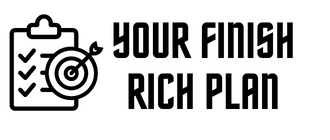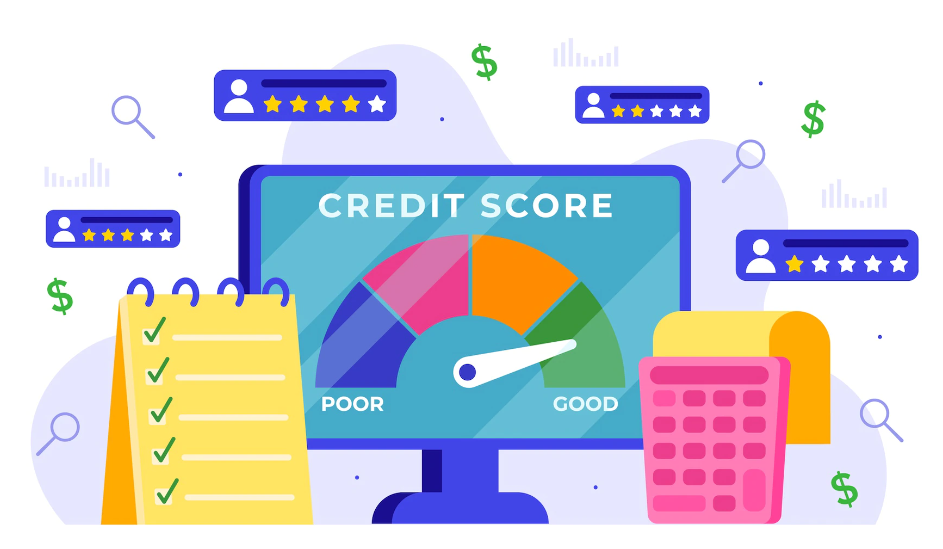You are still young, you have no experience, but at the same time you want financial independence. Or maybe you’re a student and you need more money, and your parents can’t offer you much in this regard. In both cases, you can work from home, which allows you to earn money, make your own schedule and be a little more confident in what the future offers you. Therefore, we decided to help you with some jobs for you, which you can do very well from home.
Web developer
When it comes to jobs from home, many young people opt for web developer. It is one that involves the creation of websites and applications on the Internet, and today’s young people are downright professionals at this kind of thing. It is among those online jobs that offer you great freedom from the point of view of the work schedule, and there are quite a few who opt for it.
Translator
If you have a diploma certifying your knowledge of a foreign language, among those online jobs you can try is that of a translator. In the beginning, until you manage to build a clientele, it can be quite difficult, but once you get a few good contracts, everything will settle down on a smooth road.
Text collector
It is not at all an unusual job, especially in big cities. There are many authors who need someone who knows how to transcribe their manuscripts on the computer, so you can also try this option. Or, possibly, get interested in the newspaper editorial offices if they do not need such help. You can work casually from home, which is perfect.
Cosmetics seller
Here we can talk about online jobs, but which also involve more interaction with people. They are the kind of job that is preferred especially by young women, because they are very good at everything related to cosmetics, and finding a loyal clientele is not too difficult for them. Unfortunately, you do not have a fixed salary, because you will be paid on commission, but if you manage to create a network of loyal clients, your earnings will not be modest.
Tutor
It is not considered one of those ideal jobs for young people, but it certainly has its advantages. You can help those less prepared than you to learn the subject better, you manage your own sessions and how much time you allocate for this activity. The money you can get is not very small, especially if you teach Romanian, English or mathematics.
Blogger
It is among the most sought after when it comes to home jobs. Young people are good at such things, and therefore they will not hesitate to try their luck in this field as well. As everywhere, you need to have quite a lot of knowledge, from various fields, and to know what you need to do in order for your blog to become as well known as possible.
How to sell pictures of feet and earn good money
Everyone, nowadays, is looking for additional sources of income, trying to get more money for daily living. There are some solutions, such as those online or home jobs, but here the market is already starting to get saturated. That’s why we have a challenge for you, and that means putting value on your… legs.
A good source of income
How could a picture with legs give you the chance to earn money? It sounds downright crazy and impossible! That’s what you thought when you read the lines above. In fact, it is not like that at all, and you will quickly convince yourself that I did not exaggerate anything and you even have the opportunity to earn good money this way. We were also quite reluctant at first, like you, but we did some research and found out that there are many content creators, bloggers and online entrepreneurs who quite often buy images with legs in order to succeed in selling their many products or even content. Maybe you won’t get rich overnight, but know that there are many people who have managed to get a nice income this way.
Where can you sell your feet photos?
If we have already piqued your curiosity and you want to try it yourself, you would most likely like to know how to sell pictures of feet and, above all, where. For this purpose, you can try the best-known variants, such as Instafeet or FeetFinder. You will be speechless when you see how well developed this activity is. And according to those who make money selling pictures of their feet, you can get somewhere between $5 and $100 for a photo, sometimes even more. Obviously, there are several other sites specialized in this kind of thing, which you can find with a simple search on the Internet, we just gave you a starting point.
How not to be fooled
Obviously, there is a chance that you will experience what everyone calls “tepe”. To protect yourself from something like this, you must carefully analyze each platform with this field of activity, see what are the offers you will receive, carefully read the reviews and carefully observe everything. If it’s okay, you can start working right now.
Good quality photos
To be able to succeed in this field, it is not enough just for your feet to present themselves well, but to highlight them with the help of very good quality photos. Also, as a little trick, you can personalize them with a kind of your own signature, so that your pictures are not stolen from the Internet and used by other people to get the money that was actually due to you.
It does not come until you are paid
Always, before sending your photos online, you should be paid for it. A customer wants a sample? Then send one of good quality, but on which you have applied your signature, so that it cannot be removed. There’s no need to explain why we make this recommendation, right?
A home improvement loan is a consumer loan, usually secured by collateral or a mortgage, whose purpose is to finance alterations, remodeling, or structural renovations to an existing house or other real estate structure. These loans are generally short-term, but may be for longer periods. In layman terms, the best home improvement loan rate is the one where after you’ve negotiated your loan rate and fees and figured out your loan’s monthly payments, you’re in the position where you can meet them without overextending yourself financially. If you’re looking for low rate home equity loans, it makes sense for you to do some comparison shopping. After all, securing THE best home improvement loan rate suggests you’ve looked at offers from several lenders before making a decision.
The only way for you to get the best terms on your home improvement loan is to put yourself in a position where the lender sees you as a valuable customer, and thus is willing to cut you a favorable deal when it comes to interest rates, repayment terms, repayment options, and so on. What’s going to decide your odds of getting that kind of accommodating lender? The three-digit number known as your credit score. If it’s good, you’ll have a much better chance of getting a good deal. If it’s bad, getting a home improvement loan will be very difficult. Fortunately, checking your credit score is something that can be done very easily, since there are a number of companies that can offer you a free credit report (no trial) so you can assess your credit situation and plan your loan application process (or start repairing your credit).
It’s a given fact that every time you approach a business, they will claim that only they can get you the best deal, and it’s no different with financial institutions. The difference between lenders and other service providers is that your solution will be highly customized, with your terms depending heavily on your particular financial circumstances. As a result, many people who apply for home improvement loans fail to get the best rate either because they didn’t bother checking their credit report before applying or didn’t shop around for the best deal while they were applying.
It used to be that comparison-shopping for any type of loan was not a good idea. The credit score calculation formula docks a couple points from your credit score every time a lender does an inquiry on your profile. So comparing offers meant losing points on your score because of the number of inquiries on your report. Fortunately, the credit reporting industry has adapted and now you can comparison-shop with minimal impact on your credit score: within a set period of time (15 days according to most sources), all inquiries from the same type of lender count as one inquiry.
Being a savvy shopper can help you secure the best interest rate considering your personal factors. Here’s what you should be doing.
- Get your credit reports so you can analyze your credit history and correct any mistakes.
- Get your credit scores. If you opt to get the free credit reports that you’re entitled to each year, they will not include your credit scores. For a complete picture, you should get your credit scores too
- Ask around. Talk to friends and family members, even a real estate agent, to see if they’ve had such a great experience with a bank or mortgage company that they’d recommend it to you.
- Start your research by selecting banks and financial institutions that offer home improvement loans among their financial products
- Consult with those financial institutions, give them an estimate of your credit score, and hear their offers. If you’re told that your credit score is too low to secure a good home improvement loan rate, ask for advice on how to improve your credit score.
- Consider credit unions. They often charge less than commercial banks. The trick is, you have to be a member of the credit union to get a loan, and membership is restricted to certain communities. To find out if you’re eligible to join a credit union, start by asking your employer. Also try family and friends to locate ones you might be eligible to join.
- Make visits to the lenders’ offices and ask to talk to a loan officer. Ask to be pre-approved for the loan you want.
- Don’t make any commitments to any particular lender until you’ve gotten at least half a dozen separate quotes, just state that you’re comparison-shopping so you can get the best home improvement loan interest rate and terms that you’re currently eligible for.
- Do an Internet search to see what the competition has to offer, you’ll find that plenty of additional options are only a few clicks away. Compare to what you get through in-person visits
- Study the different interest rates and other repayment terms offered by all the competitors
- Work your budget and thoroughly review it to make sure that you’ll be able to meet the monthly payments from each offer
- Once you’ve decided on one that suits you best, pay another visit to that loan officer and see if you can get even better terms
As a general rule, if you can offer a collateral, you’ll be rewarded with a lower interest rate. The collateral doesn’t have to be your house, it can be any other asset you own, that the bank feels comfortable enough about its value to hold it against your loan. Since the risk the lender is taking is lowered (he has something to fall back on should you fail to pay back the loan), he charges you a lower interest rate. In those cases, the lender will be more likely to be more flexible when negotiating your terms, especially if your credit is good. By the way, if you have good credit, you have even more options, as you can opt for an unsecured home improvement loan. In this case though, keep in mind that your interest rate will certainly be higher because you’re not giving anything to the lender as a collateral.
The best home improvement loan rate (as in, the lowest one) in not necessarily the best deal though. It won’t do you a lot of good to get the best interest rate if you’re expected to pay very high fees for late payments, if your repayment terms are unrealistic, or if you have to pay a hefty penalty for paying off the loan in a shorter amount of time. What you’re looking for is the most flexible terms, along with low interest and low fees, with as little penalties as possible.
Tackling the challenge of getting a home improvement loan isn’t hard, as long as you show up prepared. If you do your homework when it comes to selecting your lender and loantype, you can bank on a smooth experience.
Few people are in the situation where they can pay for their college expenses out of pocket. For most of us, paying for college requires using some form of financial assistance. The loan options that are available are numerous and range from federal loans to private loans. The main catch is that you have to have good credit to get the best deals. As a young adult, you might not have what is known as “good credit”, either because you haven’t had that long of a credit history to establish your credit (you then have what is known as a thin credit file), or you have taken a couple wrong turns regarding credit card use and have a not-so-perfect credit score.
If you’re a parent, you can see your son or daughter preparing for college and the cost associated with it, and very often student loans are the only way to finance their education. Yet, you want them to shoulder the cost on their own, since it’s their own future and they need to take responsibility for it.
Student Loans Without A Cosigner: College Loans For People With Little, Good Or Bad Credit
The good news is that you don’t have to forget about getting a student loan because you have little or no credit. You can even find student student loans with no cosigner, although you won’t have that much of a wide array of choices if you’re in that situation. As in most cases, it pays to do a good amount of research, and to use some persistence until you find what you’re looking for.
Here’s a rundown of what you need to look into:
- Do as much research as you can. The Internet makes this much less tedious than it used to be. Finding your ideal student loan will require that you perform Internet searches and sift through the results, filling out forms, and jotting down notes. Keep in mind that a credit check is not required for Stafford nor Perkins loans. Those are excellent starting points for traditional students.
- Complete the FAFSA (Free Application for Federal Student Aid). This is the very first step you should take, since the FAFSA is what will open the door to various federal student assistance options. FAFSA is for undergraduates and graduates enrolled in school half time or more. Completing the FAFSA not only puts you on track to receive loans, but if you qualify, it will also help you receive grant money (which is money that you don’t have to pay back). Plus, some states that offer assistance may use the information that you’ve provided on your FAFSA to determine whether or not you’re eligible for state assistance. You will need your parents’ income tax returns to complete the FAFSA, and if you’ve worked, you’ll need yours too
- Apply for the Stafford loan. Depending on who pays the interest on the loan while you’re a student, this loan can be either subsidized or unsubsidized. You might be especially interested in the subsidized Stafford loan: it’s for students that are in need; so if you have low or no income, no credit or bad credit, and no cosigner, there’s a good chance your loan application will be approved. The amount you will get will probably be small, but it’s much better than nothing.
- Apply for the Perkins loan. This is another federally-funded student loan, geared towards students that show the greatest financial need. It must be paid back under specific terms which are normally very good, such as a very low fixed interest (5 percent), and the payback terms are longer than the Stafford loan.
- If you’re a non-traditional student, you may be eligible for a few more assistance programs: there are many scholarships and grants available for students who fit a certain number of criteria, like being part of a minority, or being a student returning to college to pursue a degree. There’s a lot of them you may have never heard of, but that doesn’t mean the money isn’t available.
- Consider the Pell Grant. This program is gift aid, and is only available to students or prospective students who don’t have a bachelor’s degree yet. If you’re approved, the amount you get will depend on your individual need, your tuition cost, and whether or not you attend school part- or full-time. Expect to get between $200 and $2,200 from this grant.
- The FSEOG (Federal Supplemental Educational Opportunity Grant) is a gift aid program and is awarded to those with extraordinary financial requirements. You don’t need a cosigner. The amount awarded under FSEOG is based on a student’s financial needs and falls roughly into the same range as a Pell Grant. College students who acquired a Pell Grant are more likely to also receive a FSEOG Grant, so it’s a good idea to apply for both.
- Also consider private college loans. If you’re considering getting your student loans from private sources, such as banks or credit unions, odds are that they will ask that you have a cosigner. You might, though, bypass that requirement if you either have good credit, or accept a loan that carries a high interest rate.
Getting student loans without a cosigner is more than possible, no matter what your credit situation is. Remember that the government provides federal student aid to almost everybody, in an attempt to make college more affordable; those federal assistance options require no cosigner. They should be your first choices. Only after you have exhausted those options should you look into private college loans.
“How To Make My Credit Better?” | How To Boost Your Credit Score
It’s no secret that the current financial crisis has caused lenders to considerably tighten their standards on all types of credit. It doesn’t matter if you’re trying to get a new credit card, a consumer installment loan, a mortgage, or a home equity line of credit, it’s still going to be an uphill battle. This is the part that gets all the media coverage. The other side of the coin that is less talked about is that if you have a good or very good credit score, lenders will still be eager to do business with you, offering you easy access to credit, as well as the most attractive interest rates.
Credit scores have probably never been as important as they are right now. Just to throw a few numbers out there, a July 2008 report from the Consumer Federation of America estimated that the average borrower could save $105 a year on credit card finance charges simply by raising their credit score 30 points. Having a low credit score carries a high cost, when you consider years and years of making interest payments on credit cards, auto loans and mortgages, as well as the very real possibility of being denied bank accounts and having to resort to an expensive “fresh start checking account” to do your banking. Maintaining a score of 750 can reasonably save you more than $320,000 in interest charges over a lifetime, compared to someone whose score is 100 points lower and wasn’t eligible for the best rates. A website like Bad Credit Low Income Loans can give you a better idea of what you can get charged if you have subpar credit.
Know Your Credit Score
Depending on the type of loan that they give out, lenders use different scoring models; yet the one that has achieved industry-standard status is the FICO score. Introduced by the Fair Isaac Corporation in the mid-1980s, it rates your risk of defaulting on a debt obligation on a scale of 300 (worst) to 850 (best).
A lot of people have no idea that they have more than one FICO score. There are three major credit bureaus (Equifax, Experian, and TransUnion), and they each have their own formula. The scores would probably not be al that different, but there’s also the fact that not all companies report to all three, so your credit file might look very different from one company to the other. There’s no way to be sure which bureau’s score a lender may be using, your best bet is to monitor all three.
What’s A Good Credit Score?
Before the “Great Recession”, anything above 700 was considered a good credit score. But now it seems that limit has been bumped to something around 720-740. Just to clarify things, it’s no use trying to get that “perfect” 850 score because it’s not only almost impossible to get, but practically, the reward is just not there. Beyond the mid 700s, there’s no benefit for you if you increase your score, because you’re already in the top tier.
On the other end, the cutoff for getting decent credit is also being bumped up. It used to be that around 620, you could get decent offers; below that threshold, you were considered a subprime risk and (literally) paid the price in the form of higher interest rates. It seems that the cutoff has been increased to 660.
In the light of this information, you can see why it’s more important than ever to boost your credit score if possible. Of course, questions will pop up: “How hard will it be to raise my credit score?”, “How many points will it add”, “How long is it going to take”? The truth is, each and every person had a different set of circumstances, it boils down to three simple rules: always pay your bills on time, keep your credit balances low, and only apply for new credit when you absolutely need it.
Although simple, those rules are not what most people live by, which brings us to the specifics of how to boost your credit score when it’s already low.
Correct Mistakes On Your Credit Report
Common sense suggests that you can’t effectively start working on your scores if you don’t know what they are. Because your scores are directly derived from information on your credit reports, you need to get all three of your reports and make sure that the information that’s on them is accurate. If you find accounts that you don’t recognize, or evidence of activity that is not from you, notify the bureau to have your report corrected.
In fact, if you do have errors in your credit report, you can have them fixed in 72 hours or less by using “rapid rescoring services”. Rapid rescoring services are a legitimate and growing part of the credit industry. Usually offered by independent credit reporting agencies, these services are used by mortgage lenders or brokers who are trying to get better loan terms for their borrowers. However, you can’t use them directly: it can only be done through a mortgage company or a bank. If you apply for a home loan and find errors on your credit report, request the loan officer to conduct a Rapid Rescore.
Also keep in mind that this strategy requires proper paperwork. These services can’t remove true negative entries or items that are in dispute. You also need proof that an error was made. Typically, this comes in the form of a letter from the creditor admitting the error. And finally, results aren’t guaranteed.
Pay Your Bills On Time
Paying your bills on time accounts for 35% of your credit score, and you have complete control of it. So you should give yourself every possible advantage. Put your recurring bills on automatic withdrawal so that they always get paid, even if for whatever reason you’re away. And if you’re ever late on a payment, call the company and explain why; they will likely not report you if you can offer a valid, plausible explanation (and of course, the payment when you promised to do it)
Check Your Credit Limits And Avoid Approaching Them
Your scores might be artificially depressed if your lender is showing a lower limit than you’ve actually got, or if your limit was lowered without your knowledge. Most credit-card issuers will quickly update this information if you ask. Check your monthly statements to make sure your limits haven’t suddenly gone down. Keep close tabs on your credit card balances relative to said limits; some people suggest to try as much as possible to keep your usage under 30% of your approved limit. Finally, even if you do pay off your card’s balance every month, it’s recommended that you pay attention to the closing date. The amount you owe at that time is what’s going to be reported.
No New Credit Applications
Don’t apply for new credit unless it’s absolutely necessary. Each time you apply for credit, an inquiry is added to your report. This usually drops your credit score slightly. If you want more credit, you’re better off request a credit limit increase on your current cards rather than apply for new ones.
There is no telling what boost you will get and it really depends on your history, but these simple tips could give you a good head start. There are plenty more things you can do, like maintaining a healthy mix of credit types, or paying down your debt. These will be the subject of future posts. Over time if you maintain a financially responsible lifestyle, your credit will steadily improve. You may not be able to erase the past, but you can work towards building a better future.





